Earrings after historical models of the Antiquity, Viking Era and the Middle Ages.
Here you can buy authentic ear rings of the Romans, Celts, Teutons and Vikings.Continue ...
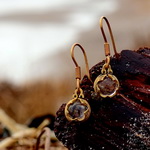 In our online shop you can buy authentic replicas of Roman earrings as well as detailed medieval ear jewellery and authentic temple rings or Viking earrings. Our earrings are made true to detail according to the model of historical finds or is modelled on antique examples. Earrings were not only widespread in the Middle Ages, but already in ancient times with the Celts and Romans. Viking earrings, on the other hand, were not known at all, but thematically matching earrings are still appropriate today for a stylish appearance and is also an elegant accessory for everyday life.Show less
In our online shop you can buy authentic replicas of Roman earrings as well as detailed medieval ear jewellery and authentic temple rings or Viking earrings. Our earrings are made true to detail according to the model of historical finds or is modelled on antique examples. Earrings were not only widespread in the Middle Ages, but already in ancient times with the Celts and Romans. Viking earrings, on the other hand, were not known at all, but thematically matching earrings are still appropriate today for a stylish appearance and is also an elegant accessory for everyday life.Show lessRetailers for LARP or medieval re-enactment are welcome to register for our medieval wholesale store.
Products
show 1 to 67 (out of a total of 67 articles)
Dealers for museum supplies, medieval and Viking re-enactment or LARP are cordially invited to register as retailer for wholesale in Pera Peri's medieval shop. We guarantee the best quality at good prices with short delivery times!
Historical earrings in the assortment of Pera Peris
 Recreations of earrings from antiquity, Viking Era and the Middle Ages
Recreations of earrings from antiquity, Viking Era and the Middle Ages
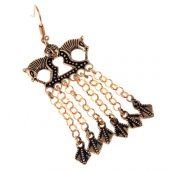 In the medieval online store of Pera Peris we offer a nice selection of earrings, which are not only suitable as earrings for everyday life, but also especially good for combining with the historical garb.
In the medieval online store of Pera Peris we offer a nice selection of earrings, which are not only suitable as earrings for everyday life, but also especially good for combining with the historical garb.Our earrings are made of high-quality bronze casting, in which the filigree design is particularly clear and visible. You can also buy our historical earrings in genuine silver plated, where we use a particularly strong silver plating of 10 Mg.
The most of our earrings are inspired by historical models from antiquity and the Middle Ages, as they were already used in Central Europe over a thousand years ago by Celtic, Roman and Germanic peoples up to the Vikings and Slavs as design elements.
Some earrings reflect pagan ideas, others follow a free design, some earrings are even an authentic replica of a historical find.
 The use of earrings in the Middle Ages
The use of earrings in the Middle Ages
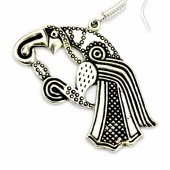 Basically, one must note that jewellery in the form of earrings is represented in Roman and Byzantine finds and also on illustrations quite more frequently, but regular earrings since late antiquity seem to have been no longer widely in fashion.
Basically, one must note that jewellery in the form of earrings is represented in Roman and Byzantine finds and also on illustrations quite more frequently, but regular earrings since late antiquity seem to have been no longer widely in fashion.Instead of earrings, in the early Middle Ages the women of the Germanic and Slavic tribes wore so-called temple rings, simple or elaborately decorated rings that were braided into a band or the hair and were not fastened in a hole in the ear.
The temple ring was usually made of silver or bronze, but could sometimes also be made of iron
 The use of temple rings by Slavs and Germanic peoples.
The use of temple rings by Slavs and Germanic peoples.
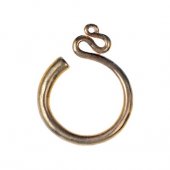 Slavic temple rings were always attached in pairs or more at the temples or near the forehead in the hair or worn on a ribbon of fabric or leather or could be attached to a hood or headscarf. Smaller temple rings were usually braided into a band, larger ones were worn as a single ring directly in the hair.
Slavic temple rings were always attached in pairs or more at the temples or near the forehead in the hair or worn on a ribbon of fabric or leather or could be attached to a hood or headscarf. Smaller temple rings were usually braided into a band, larger ones were worn as a single ring directly in the hair.Temple rings were not only worn by Slavs and Rus, but were also common in the early Middle Ages as hair ornaments in the Alemannic and Frankish regions and are therefore often found in the Germanic grave inventory of the Merovingian period, especially in southern Germany.
For example, finds of Germanic temple rings are known from several Merovingian cemeteries such as Aschheim, Alladorf, Grafendobrach, Mainz, or Eggolsheim, to name but a few.
In the merovingian grave 94 of Basel Kleinhüningen even real earrings in the modern sense with ear hooks were found, which is rather an exception.
So the temple ring is by no means a purely Slavic form of the earring, but it went out of fashion in southern Germany already during the Carolingian period, whereas the temple ring was in use among the Slavs and in the Baltic States as well as in Finland until the 12th century.
With the Vikings in Scandinavia, however, neither earrings nor temple rings were in use, although there were active trade connections with the Slavs and Byzantines and the temple ring may well have been known as ear jewellery.
The size of the temple rings could be very different. Usually, however, these were rather small with a diameter of 3 to 5 cm, whereby the younger specimens usually turned out a little larger. However, there were also quite large earrings, which could cover the whole temple area, including those from which long chains hung down.
 The different forms of temple rings
The different forms of temple rings
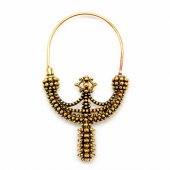 The simplest form of a temple ring consisted of a simple, open ring, which was rolled up at the top to form a small loop in an S-shape, from which the term loop ring is derived.
The simplest form of a temple ring consisted of a simple, open ring, which was rolled up at the top to form a small loop in an S-shape, from which the term loop ring is derived.Besides the most common plain earrings made of plain wire, there are also twisted temple rings or those with wire wrapping.
Eyelet rings, on the other hand, are temple rings that have an eyelet at one end with a hook at the opposite end.
In addition, elaborately made earrings with soldered-on beads and sleeves made of silver plate and filigree granulation decoration were also worn, as they were particularly common in Russia and Moravia.
Germanic temple rings with a button-shaped thickened end, so-called button earrings, as they are known from north-east Bavaria, occur much more rarely.
The West Germanic bobble pendants represent a special form. These were provided with an elongated bead. In the South German excavations of Heilbronn, Weismain and Heidelberg, so-called pendant rings were also found, which were equipped with hanging decorative elements.
Variations of the temple ring in the form of crescent-shaped pendants are also known from the Byzantine and Magyar regions as earrings.
We would be happy if you enjoyed this little course through the medieval earrings and maybe you will find a matching earring that you would like to wear with your historical garb or even in everyday life.

